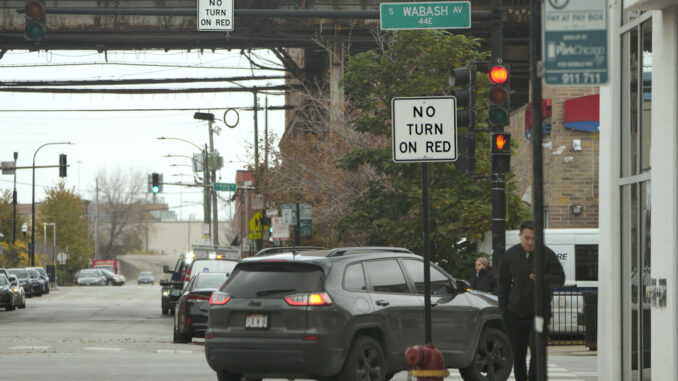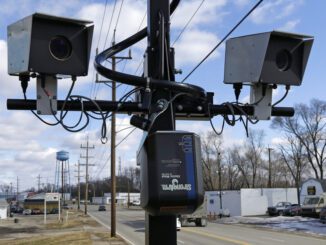
CHICAGO — Sophee Langerman was on her way to a bicycle safety rally in Chicago’s Lakeview neighborhood in June when a car turning right rolled through a red light and slammed into her bike, which she was walking off the curb and into the crosswalk.
The car was moving slowly enough that Langerman escaped serious injury, but the bicycle required extensive repairs. To Langerman, it’s another argument for ending a practice that almost all U.S. cities have embraced for decades: the legal prerogative for a driver to turn right after stopping at a red light.
A dramatic rise in accidents killing or injuring pedestrians and bicyclists has led to a myriad of policy and infrastructure changes, but moves to ban right on red have drawn some of the most intense sentiments on both sides.
Washington, D.C.’s City Council last year approved a right-on-red ban that takes effect in 2025. New Chicago Mayor Brandon Johnson’s transition plan called for “restricting right turns on red,” but his administration hasn’t provided specifics. The college town of Ann Arbor, Michigan, now prohibits right turns at red lights in the downtown area.
San Francisco leaders recently voted to urge their transportation agency to ban right on red across the city, and other major cities such as Los Angeles, Seattle and Denver have looked into bans as well.
“Drivers should not have the option to decide for themselves when they think it’s safe,” said Langerman, 26. “People are busy. People are distracted.”
But Jay Beeber, executive director for policy at the National Motorists Association, an advocacy organization for drivers, called it a “fallacy” to assume such blanket bans would make streets safer.
He cited an upcoming study by his association that analyzed California crash data from 2011-2019 and found that drivers turning right on red accounted for only about one pedestrian death and less than one bicyclist death statewide every two years.
“What’s really behind this movement is part of the agenda to make driving as miserable and as difficult as possible so people don’t drive so much,” Beeber said.
The United States is one of few major countries that generally allow right turns on red. Concerned that cars idling at stop lights could compound an energy crisis, the U.S. government warned states in the 1970s that they could risk some federal funding should cities prohibit right on red, except in specific, clearly marked areas. Although another energy-conscious provision capping speed limits at 55 mph has long been abandoned, right on red has endured.
Right on red has never been allowed across most of New York City, where large signs alert Manhattan’s visitors that the practice is prohibited there. But it was the default policy practically everywhere else in the U.S. until last year’s vote in the nation’s capital.
Critics argue that banning right on red will not only inconvenience motorists but also slow down commuter buses and deliveries. The United Parcel Service hasn’t taken an official position on right on red but has long directed its drivers to avoid left turns whenever possible, viewing them as inefficient.
According to a national report by the Governors Highway Safety Association, more than 7,500 people walking were struck and killed by automobiles in 2022, the highest number since 1981. The spike, which included all accidents — not just those involving right turns on red, was attributed in part to an increase in larger vehicles such as SUVs and pickup trucks on the road.
The Insurance Institute for Highway Safety found that the odds a pedestrian would be killed when struck by an automobile turning right were 89% higher when the vehicle was a pickup and 63% higher when it was an SUV, due to larger blind spots and the deadlier force associated with heavier models.
“These big, blunt front hoods, they knock people down and run over them, as opposed to before when people would crumple onto the hood,” said Mike McGinn, a former Seattle mayor who is the executive director of America Walks, a national nonprofit that advocates for pedestrian-friendly neighborhoods.


